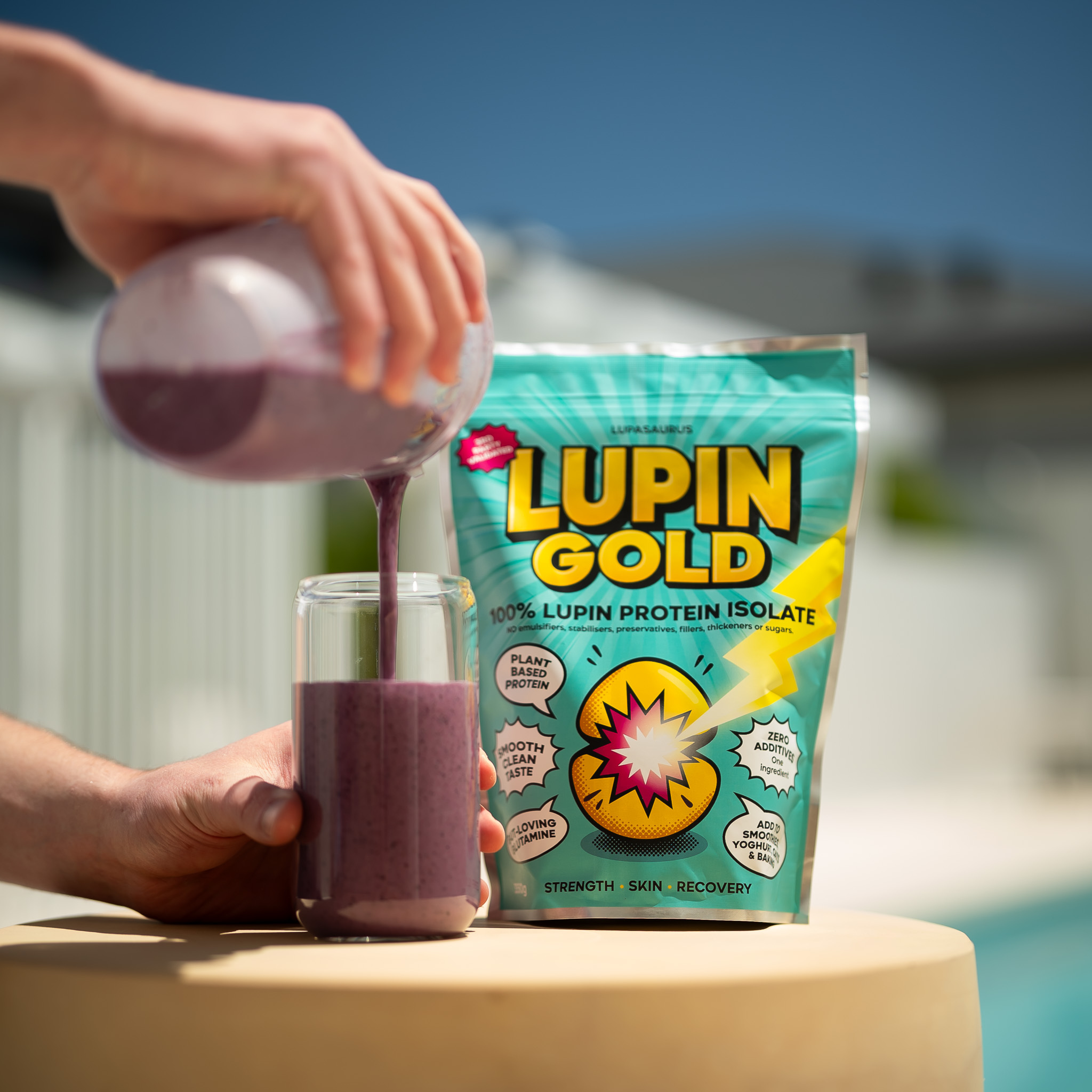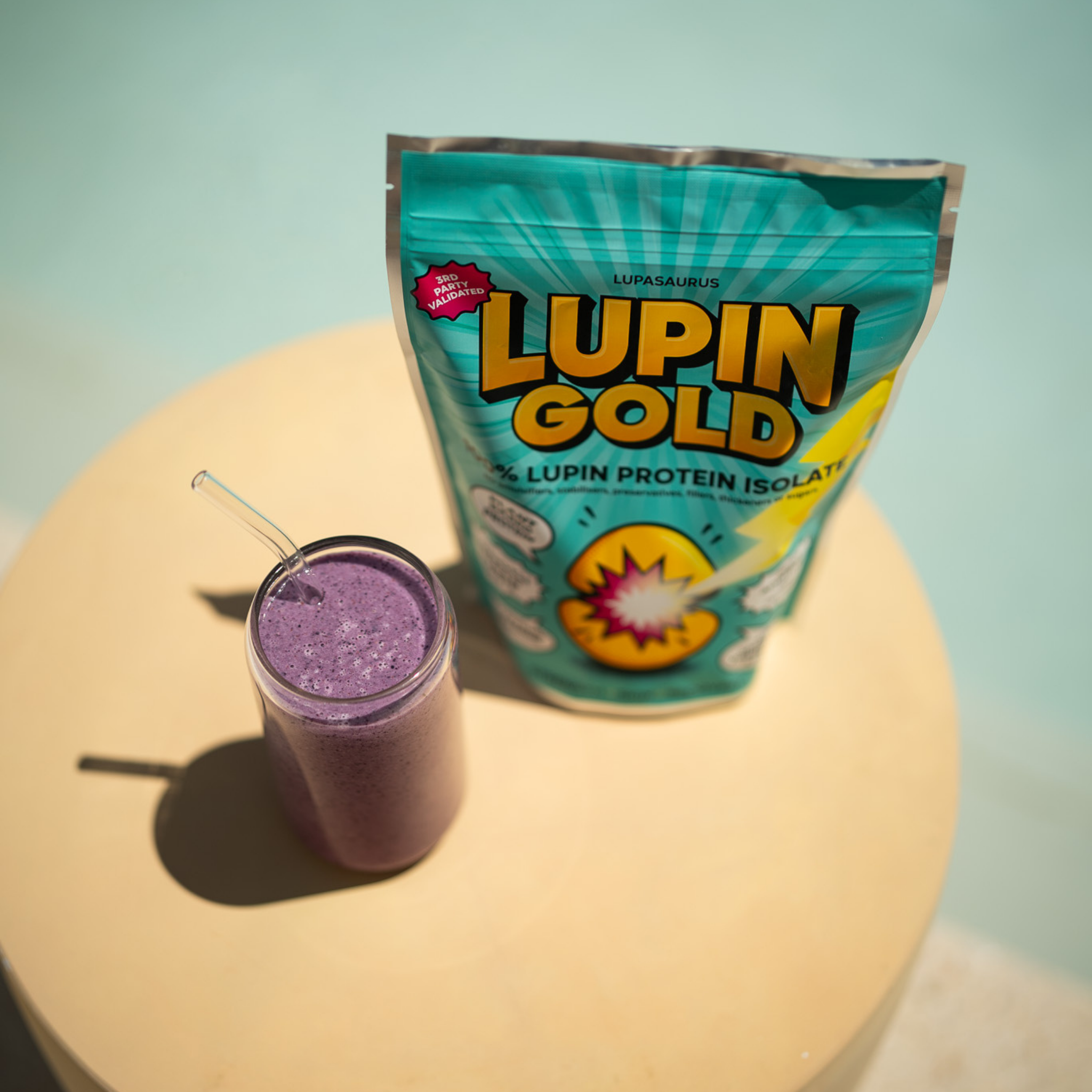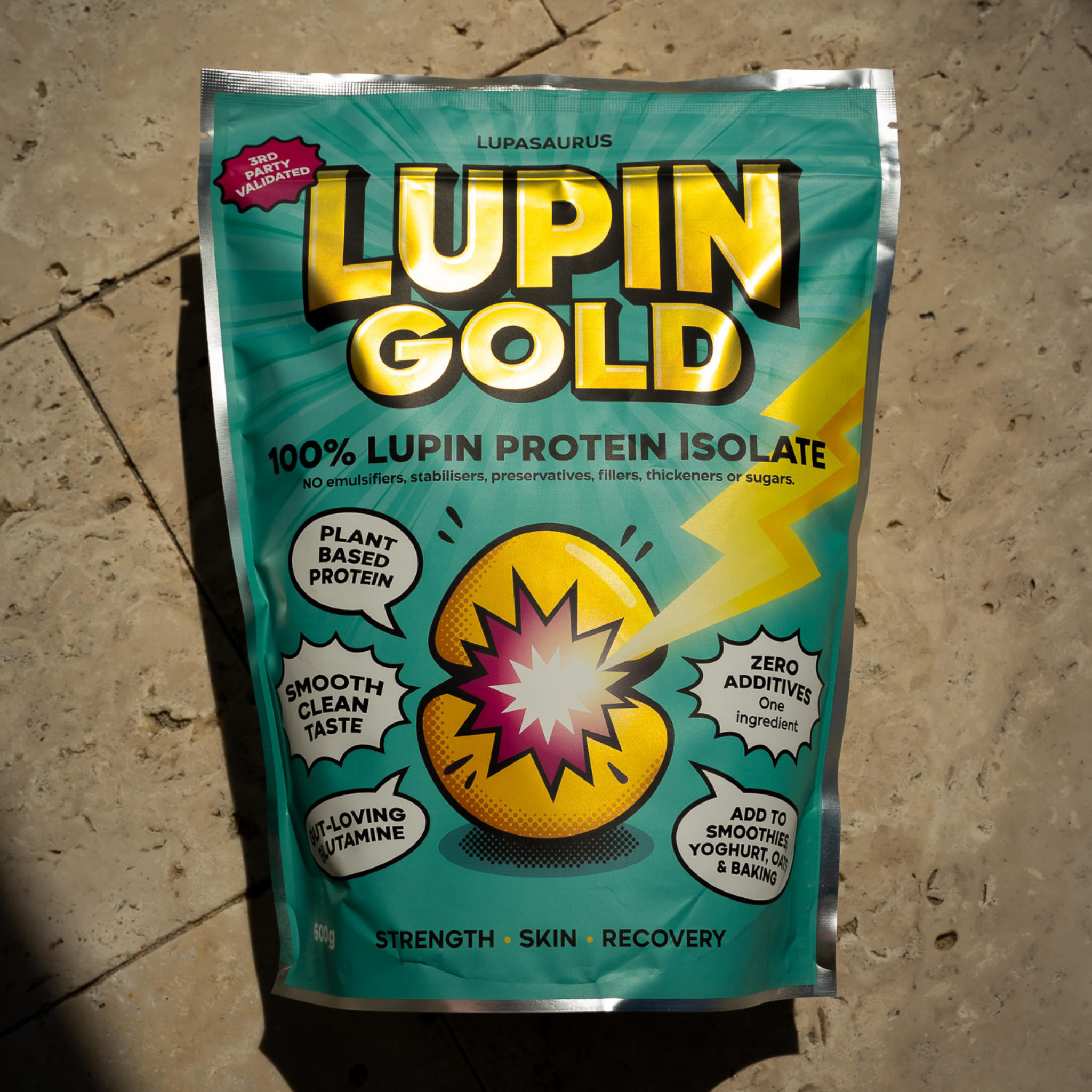Branched-Chain Amino Acids (BCAAs) or Essential Amino Acids (EAAs) — which team are you on? Here’s the truth: your body needs both. Any complete protein gives you all nine EAAs, which by definition includes the three BCAAs (leucine, isoleucine, valine). Lupin Gold’s lupin protein isolate delivers the full spectrum naturally — no synthetic “amino spiking”, no gimmicks.
BCAAs vs EAAs: What’s the Difference?
EAAs are the nine amino acids your body can’t make; you must consume them. BCAAs are a sub-group of EAAs — leucine, isoleucine and valine — prized for performance and recovery. Every complete protein contains BCAAs, but BCAAs alone aren’t enough to rebuild muscle; you still need the other six EAAs as raw materials.
Why You Need Both for Recovery & Performance
- Leucine flips the switch. It activates muscle protein synthesis — the “go” signal for growth and repair.
- BCAAs support during training. They can be used directly in muscle, helping reduce breakdown and fatigue.
- EAAs complete the job. They supply the building blocks to actually repair tissue, improve net muscle balance and drive adaptations.
The Practical Takeaway
For best results, choose a well-balanced and complete protein that is naturally rich in BCAAs. That way you get the signal and the supplies in one scoop.
The Problem with Overhyping BCAAs
Some products spotlight “added BCAAs” while skimping on overall protein quality. BCAAs alone can trigger the signal, but without the remaining EAAs, muscle-building stalls. Equally, some single-source plant proteins can be light on one EAA (e.g., methionine), which limits the whole process. The simple fix: use a complete and well-balanced protein.
Lupin Gold: Naturally Packed with BCAAs and EAAs
Lupin Gold’s lupin protein isolate is a complete plant protein with a balanced amino acid profile. A typical 20–30 g serve delivers meaningful BCAAs (with ~2 g leucine per ~30 g serve) alongside the rest of the EAAs — no synthetic fortification required.

Amino Acid Snapshot (per 100 g of powder)
| Amino Acid (EAA) | Lupin Gold (Lupin) | Notes |
|---|---|---|
| Leucine (BCAA) | ~6–7 g | Primary trigger for muscle protein synthesis |
| Isoleucine (BCAA) | ~3–4 g | Energy uptake in muscle; supports immune function |
| Valine (BCAA) | ~3–4 g | Endurance and anti-catabolic support |
| Lysine | ~5–6 g | Tissue repair; supports calcium absorption |
| Histidine | ~2–3 g | Precursor to carnosine (buffering & endurance) |
| Phenylalanine | ~3–4 g | With tyrosine, supports focus and mood |
| Threonine | ~3 g | Connective tissue; gut and liver support |
| Methionine + Cysteine | ~2–3 g | Sulphur amino acids — detox & structural roles |
| Tryptophan | ~0.6–0.8 g | Serotonin precursor; sleep & recovery |
Figures are representative for high-quality lupin isolates (ours, not anyone else's). Exact values vary slightly by batch; see pack for specifics.
Lupin vs Whey vs Pea vs Soy (At a Glance)
Lupin (Lupin Gold)
- Complete amino profile with very solid BCAA levels
- Gut-friendly, neutral taste; ultra-clean label (one ingredient)
- Plant-based, Aussie-grown; naturally sky high in arginine & glutamine
Whey Isolate
- Very high BCAAs, complete protein
- Dairy-based — not ideal for all guts or diets
Pea Isolate
- Decent BCAAs but lighter in methionine
- Often blended to cover more EAA balance
Soy Isolate
- Complete protein with good BCAA content
- Not suitable for some due to allergens/preferences
The Lupin Gold Difference
- One ingredient. 100% Lupin Protein — no added aminos, sweeteners or gums.
- Performance without the bloat. High protein, highly digestible, neutral taste.
- Science over hype. Natural BCAAs + full EAAs in every scoop.
How to Use
- Daily protein top-up: blend into smoothies, oats or yoghurt
- Cooking: bake into high-protein pancakes, muffins and loaves
Further reading: The Scientific Stuff • Allergen Information
Lupin Gold — proudly WA-grown. Plant-based, complete amino profile, naturally high in BCAAs.
Disclaimer: This article is for general information only and reflects our own research and understanding at the time of writing. We are not scientists, and information may evolve. It is not individual medical advice — please speak with your healthcare professional for personalised guidance.









